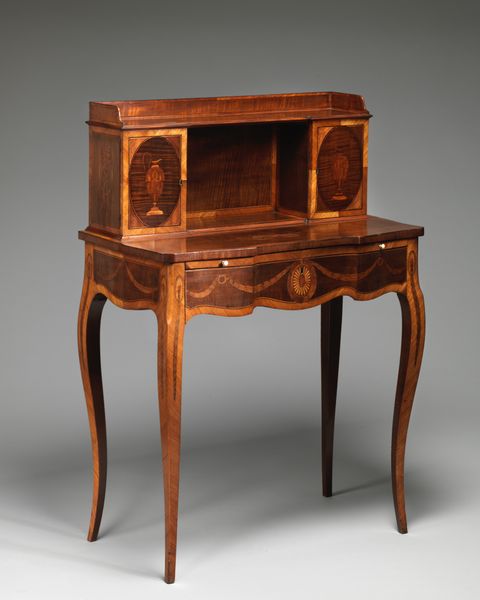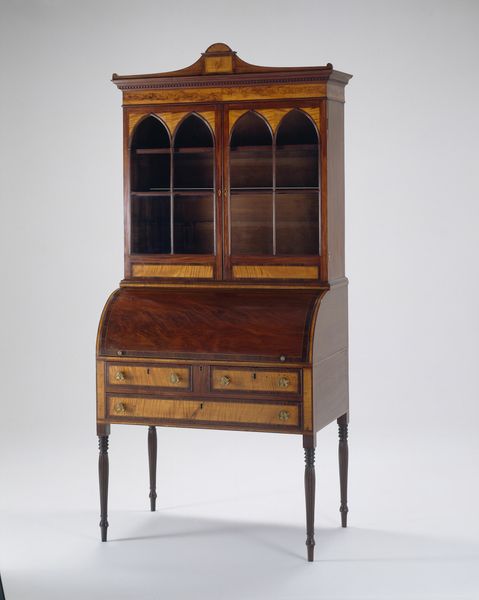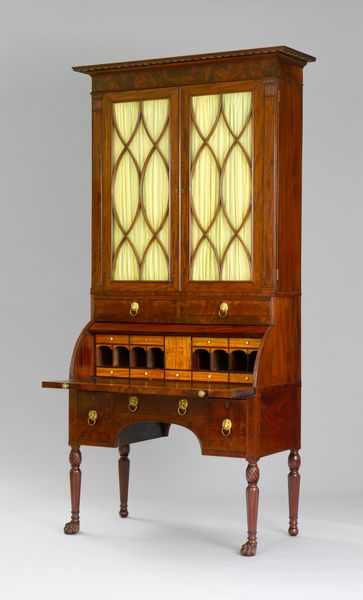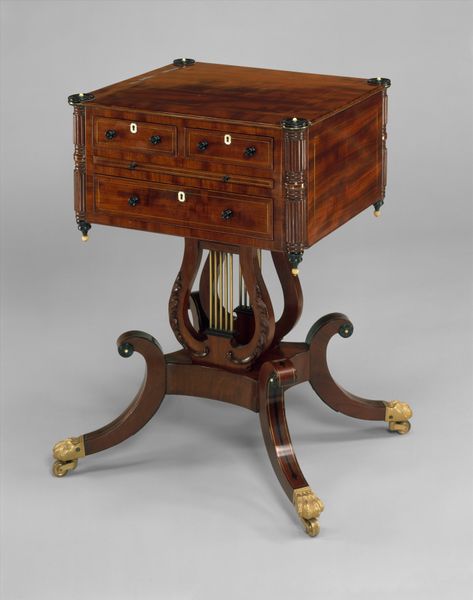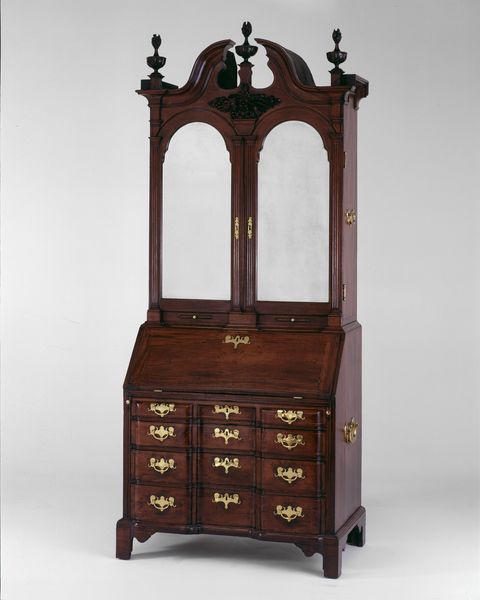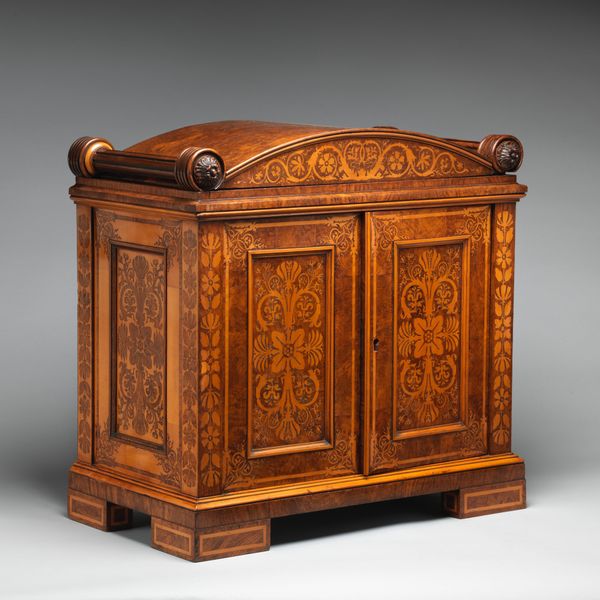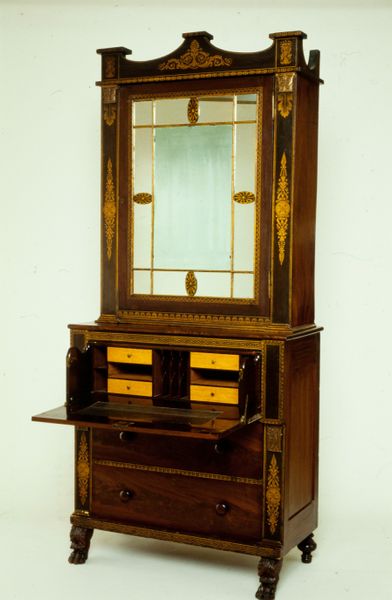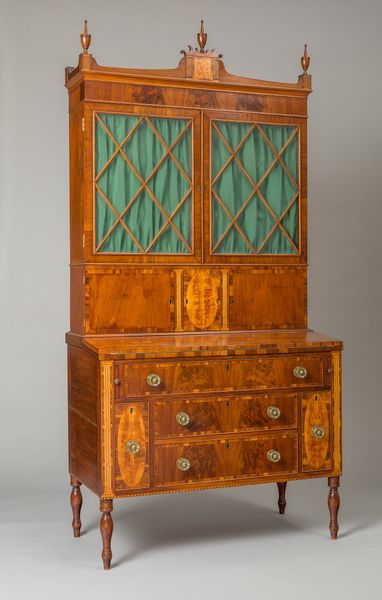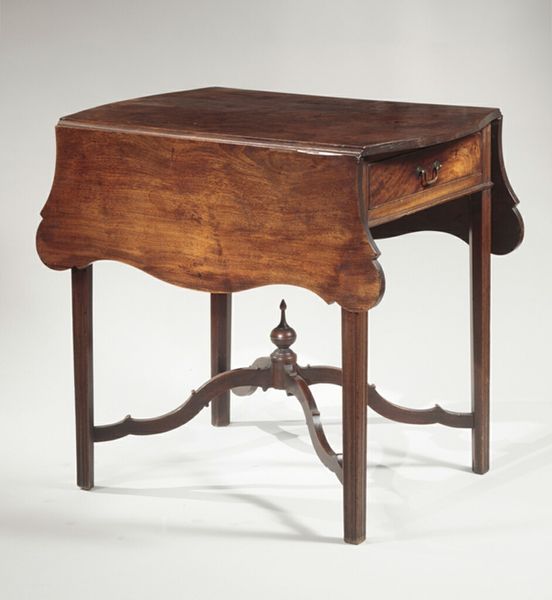
Dimensions: Overall: 58 × 32 3/4 × 16 in. (147.3 × 83.2 × 40.6 cm)
Copyright: Public Domain
Editor: This decorative dressing table, crafted between 1785 and 1800 by Seddon, Sons and Shackleton, and residing here at the Met, is just stunning. The wood grain is incredible. How can we even begin to interpret the beauty and craft of this piece? Curator: I think the most fascinating aspect of this dressing table is the labor invested in its materiality. The various woods used, the precision joinery—all speak to a very specific mode of production. Editor: So, less about aesthetics, and more about...how it was made? Curator: Precisely! The materials themselves are not just decorative. Think about where the wood came from, how it was processed. Who were the artisans involved? Were they specialized cabinet makers? The way the raw materials were transformed is crucial to understanding the object's value. Editor: And what about the neoclassical style? Does that influence the materiality or the way we perceive its creation? Curator: Absolutely. Neoclassicism was a deliberate choice tied to particular social aspirations. The demand for these types of specialized pieces influenced the workshops and division of labor required to create them. Consider the social context, how the ownership of such a piece would signify status, wealth, and taste. Editor: That makes a lot of sense. I was so focused on the visuals; I completely overlooked the economic and labor aspects involved. Curator: Often, by examining the materiality and production, we uncover a deeper understanding of the historical forces at play. Editor: I'll never look at antique furniture the same way again. Thanks!
Comments
No comments
Be the first to comment and join the conversation on the ultimate creative platform.
